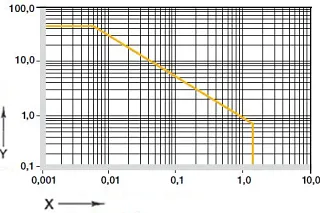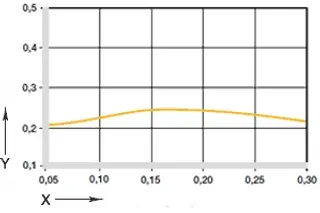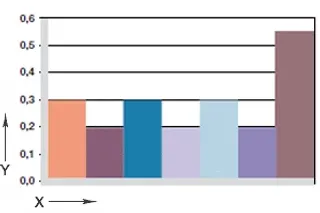Change Language :
iglidur® L250 - Material data
Material table
General specification
Unit
iglidur® L250
Test method
density
g/cm³
1,50
Colour
beige
max. Moisture absorption at 23°C/50% room humidity.
% by weight
0,7
DIN 53495
max. total moisture absorption
wt.-%
3,9
Sliding friction coefficient, dynamic, against steel
μ
0,08-0,19
pv value, max. (dry)
MPa x m/s
0,4
Mechanical specification
flexural modulus
MPa
1.950
DIN 53457
flexural strength at 20°C
MPa
67
DIN 53452
Compressive strength
MPa
47
maximum recommended surface pressure (20°C)
MPa
45
Shore D hardness
68
DIN 53505
Physical and thermal specification
Upper long-term application temperature
°C
+90
upper short-term application temperature
°C
+180
Upper short-term ambient temperature1)
°C
+200
Lower application temperature
°C
-40
thermal conductivity
W/m x K
0,24
ASTM C 177
coefficient of thermal expansion (at 23°C)
K-1 x 10-5
10
DIN 53482
Electrical specification
Volume resistivity
Ωcm
> 1010
DIN IEC 93
surface resistance
Ω
> 1011
DIN 53482
- Without additional load; no sliding movement; relaxation not excluded
Table 01: Material data

diagram. 01: Permissible pv value for iglidur® L250 plain bearings with 1 mm wall thickness in dry operation against a steel shaft, at +20 °C, installed in a steel housing
X = surface speed [m/s]
Y = load [MPa]
iglidur® L250 is a plain bearing material for high speed, fast sliding movements and low coefficient of friction. The material iglidur® L250 can utilise these advantages particularly at low loads. Applications in which these advantages play a role include fans, small motors, high-speed sensors and magnet technology.

Diagram 04: Coefficient of friction as a function of the surface speed, p = 0.75MPa
X = surface speed [m/s]
Y = coefficient of friction μ
friction and wear
In the best pairing (against 304 SS shafts), a low load coefficient of friction of 0.14 is achieved. Even at 10 MPa coefficients of friction below 0.1 were measured (diagram. 04 and 05).

diagram. 06: Wear, rotating application with different shaft materials, p = 1 MPa, v = 0.3 m/s
X = Shaft material
Y = wear [μm/km]
A = aluminium, hard anodised
B = free cutting steel
C = Cf53
D = Cf53, hard chrome-plated
E = HR carbon steel
F = 304 SS
G = high grade steel
Shaft materials
As can be seen in diagram 06, a large number of shafts are recommended for low load and low rotation.
The good coefficients of friction are also maintained over a wide range of recommended shaft roughnesses. For loads greater than 1 MPa, special attention should be paid to the shaft material used.
Consulting
I look forward to answering your questions
J. & E. Papadopoulos S.A.+30 210 4113133Write e-mail
Shipping and consultation
In person:
Monday to Friday from 7 am - 17 pm.
Saturdays from 8 am- 12 pm.
Online:
24h
WhatsApp-Service:
Montag – Freitag: 8 – 16 Uhr




